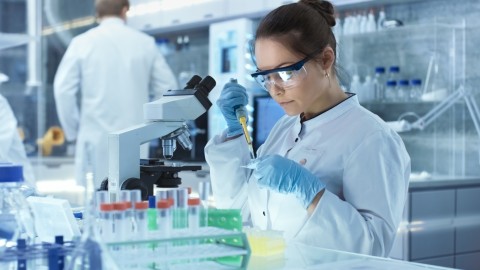Ensure safe laboratory operations with a risk assessment from specialists
Your laboratory employees are constantly exposed to chemical substances and hazardous materials as well as other hazards in the course of their work. This can easily lead to health hazards such as inhalation of toxic vapors, chemical burns, skin irritation or burns and explosions. For this reason, special care must be taken in the laboratory during all work processes. A regular risk assessment helps to identify potential sources of danger and to mitigate them by implementing suitable protective measures.
Every company is obliged to carry out such risk assessments in laboratories on a regular basis. The basis for this includes the provisions of the Occupational Health and Safety Act (ArbSchG), the Hazardous Substances Ordinance (GefStoffV) and the Biological Substances Ordinance (BioStoffV).
Initial information on which aspects need to be considered in the risk assessment in the laboratory is provided by the risk catalog of the German Social Accident Insurance Institution for the raw materials and chemical industry (BG RCI) and the current versions of information 213-850 "Safe working in laboratories" and 213-086 "Biological laboratories" published by the German Social Accident Insurance (DGUV).
Risk assessment in laboratories - play it safe!
Risk assessment in the laboratory is a process that requires a great deal of specialist knowledge about typical laboratory activities, spatial conditions and the current legal situation.
Anyone who works in a company's own laboratories on a daily basis is at risk of becoming "blind" and simply no longer noticing many hazards. In addition to the typical hazards associated with handling chemical substances, there are other health risks in the laboratory that may not always be directly "on the radar", for example:
- Rooms with inadequate lighting or ventilation
- Inadequate fire protection
- Inadequate escape routes
- High noise pollution
- Unexpected interactions between hazardous substances
- Unergonomic workplaces that place unfavorable strain on the musculoskeletal system
- Psychological stress factors
- Missing or inadequate operating instructions
- Missing or inadequate emergency equipment
As an employer, you are obliged to carry out a risk assessment. However, you have the option of having internally trained employees with specialized expertise or external service providers advise you on the risk assessment of your laboratories or of entrusting the entire process to experienced laboratory experts such as Infraserv Höchst.







